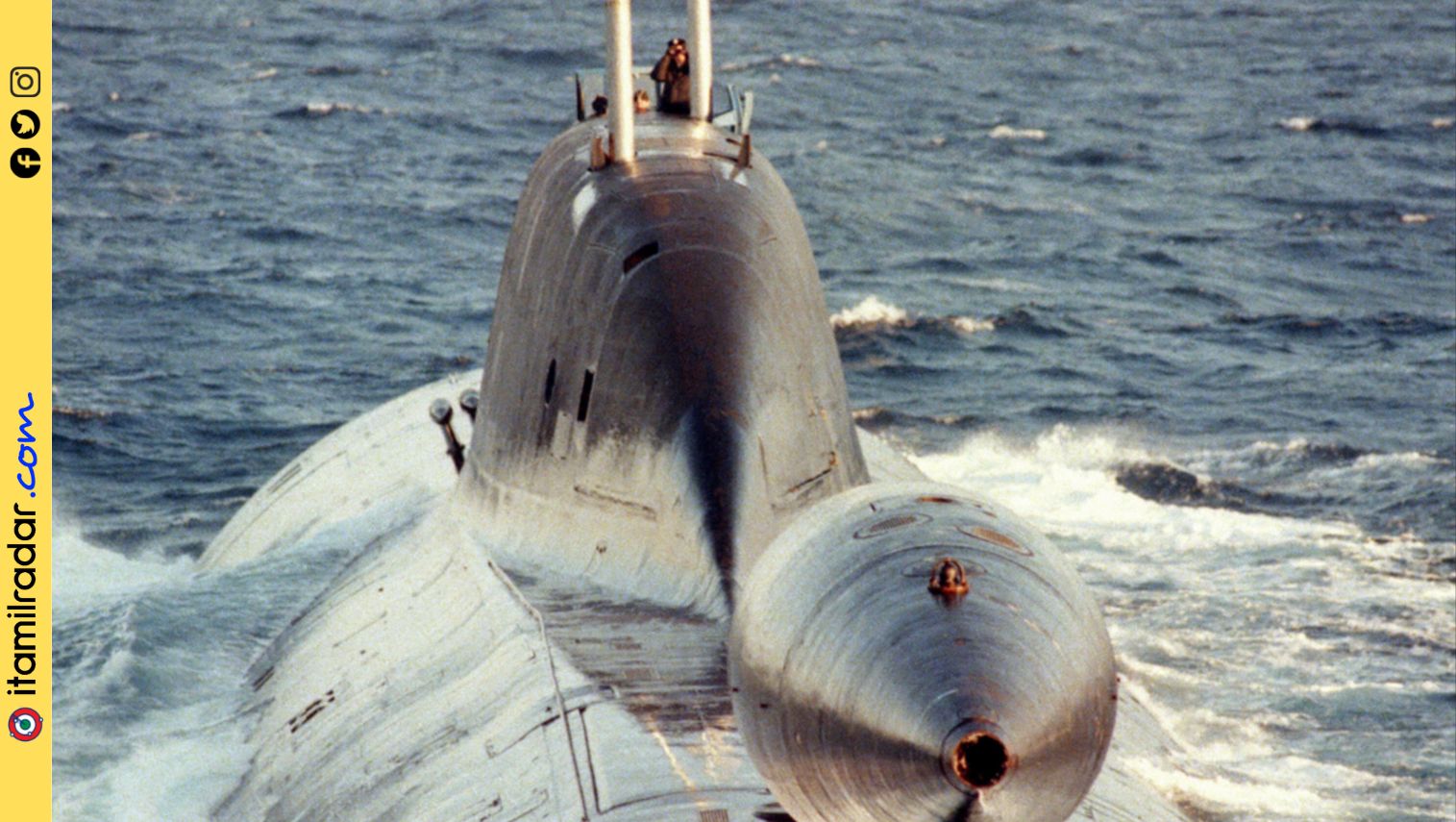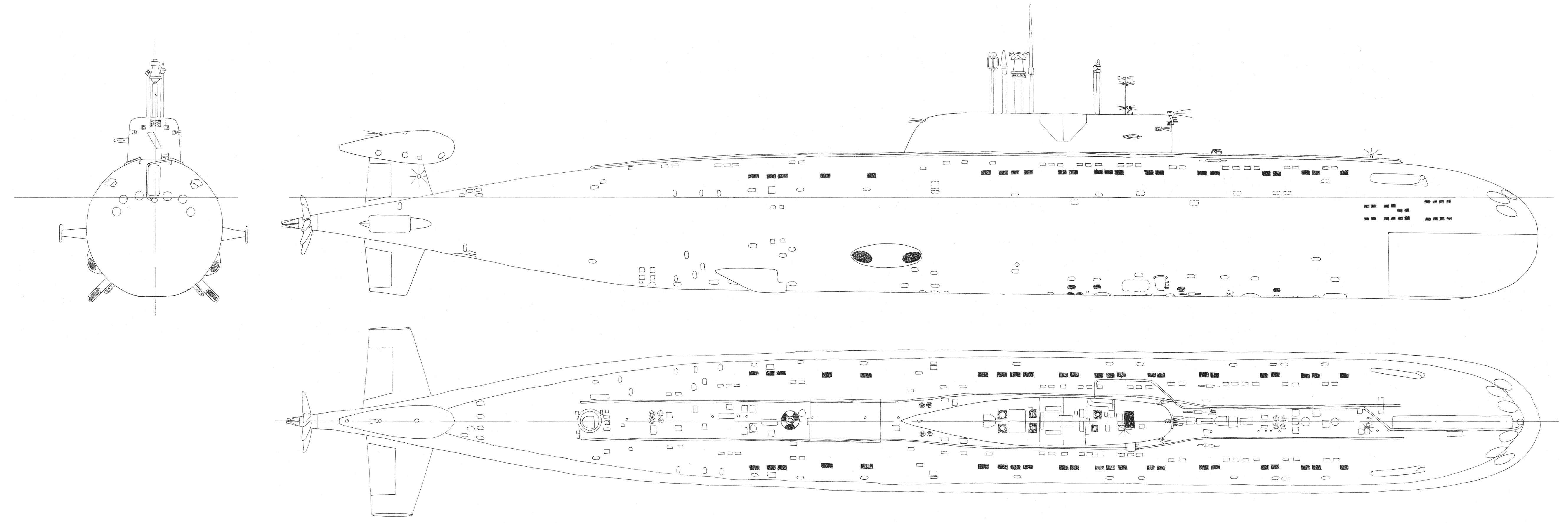Sierra Class Submarine - Preview size: 800 × 544 pixels. Other resolution: 320 x 217 pixels | 640 x 435 pixels | 1,024 x 696 pixels | 1, 280 x 870 pixels | 3000 × 2039 pixels.
This file is the work of a US sailor or service member. of the Navy, taken or performed as part of that person's official duties. As a work of the US federal government, it is in the public domain in the United States.
Sierra Class Submarine

This file has been identified without known restrictions under copyright law, including all associated and related rights.
U.s. Navy's Virginia Class Submarines To Get 76% More Firepower
*''Source''': [http://www.dodmedia.osd.mil/Assets/Still/1985/Navy/DN-SN-85-06983.JPEG DoDMedia] *''''Publicly released'' ' *ID:DN-SN-85-06983 *Service Described: Other Services *Aerial view of a Sierra-class Soviet nuclear-powered attack submarine.
This file contains additional information, such as Exif metadata, that may have been added by the digital camera, scanner, or software used to create or digitize it. If the file has been modified from its original state, some details such as the time stamp may not fully reflect the original file. The time stamp is only as accurate as the clock on the camera and can be completely wrong.
Aerial view of the Sierra-class Soviet nuclear-powered attack submarine. Photo courtesy of the Royal Norwegian Air Force. The footage shows the wake detection equipment, rescue pods and saunas on the Sierra II class submarines and explores measures to protect forces ashore.
A video from the official Russian Defense Ministry TV channel offers an inside look at the titanium-hulled Sierra-class nuclear-powered attack submarines, including a relatively close-up view of their track detection systems. The footage shows the interior spaces, including the inside of an escape pod on one of the submarines. It also provides insight into the various force protection measures used by the Russian Navy, including divers armed with special underwater guns and shoulder-mounted launchers that fire small depth charges used to fight enemy swimmers.
Testors 1/700 904 Uss Franklin And Soviet Sierra Submarines W/aircraft And Stands
The "Military Acceptance" show, which aired over the weekend and can be watched in its entirety below, focused on the Russian Navy's Project 945 and Project 945A submarines. In Russia they are also known as
, or SOKS, is clearly visible on the sail with two protrusions just in front of the top.
There is also a relatively small upper mast similar to that associated with the SOKS array found on some Project 971 nuclear-powered attack submarines, also known as

Another view of the SOKS suite in Pskov, including the relatively small upper mast, visible behind the folding windshield above the sail., shot by TV Zvezda
Why Russia's Akula Class Submarines Are Big (silent) Threat
Part of the SOKS system on top of the sail of the Akula-class submarine., RT capture
, has no mast above the sail, but has a pair of forward spars and a side mounted sponson.
A view of Nizhny Novgorod, on which the SOKS equipment is clearly visible in front of the sail, as well as the side-mounted sponson, but without the mast on top of the sail., shot by TV Zvezda
Wake detection systems are almost exclusively associated with Soviet and later Russian submarines, although other countries have explored the concept over the years, including most recently in the case of the UK. Royal Navy. From what is known of the various SOKS packages that first appeared in the 1960s, they were designed primarily to detect other submarines underwater by detecting changes in water density that leave them in their condition.
Brazilian Navy Commissions First Scorpene Class Submarine Riachuelo
There are also reports indicating that some versions of SOKS can detect traces of certain chemicals, such as flakes of sound reduction coatings that peel off or byproducts of oxygen generation systems released into the water, as well as nuclear radiation. Regardless, SOKS and similar systems should offer the option of a passive, non-acoustic sensor to complement active and passive sonars. You can read more about the advantages this can offer for stealth tracking and then potentially dealing with enemy submarines in the previous installment of War Zone.
S, the first of which entered service in 1990 and are considered very quiet, making them difficult to detect and track, remain some of the most capable attack submarines in service with the Russian Navy today. Their titanium alloy hulls are another major focus of the episode "Military Reception", as the title "Titanium Submarines" makes clear. The use of titanium provides additional strength and in turn allows these boats to dive deeper than their steel counterparts.
Titanium also has the advantage of being more resistant to corrosion, which is a very positive feature for warships and submarines that spend most of their time in salt water, and is only very weakly magnetic. At one point in this recent episode of "Military Reception," a Russian Navy sailor demonstrated how to keep a magnetic flashlight from getting stuck in a ship's hull. Despite some speculation that it could help submarines avoid detection by magnetic anomaly detectors (MAD) aircraft or magnetic mines, there are more than enough other metals used elsewhere in their construction to negate any reduction in the titanium hull signature.

A Russian Navy sailor demonstrates the extremely low magnetism of the titanium alloy hull on one of the Russian Navy's Sierra II-class submarines by dropping a non-stick magnetic flashlight., clip from TV Zvezda
Kilo Class Submarine 3d Model $149
However, titanium is also expensive and complicated to work with, especially when building large structures such as submarine pressure hulls. Workers building the Soviet Union's Project 705 submarines, another titanium-hulled design also known as
Class, who are said to have to perform many of their tasks in special rooms filled with inert argon gas while wearing elaborate "moon suits". The final Akula class, a titanium hullless design, is similar in many ways
In the end, only four Sierra-class submarines were built, two of each subclass. The first boat of project 945 entered the service of the Soviet Navy in 1984, followed by the second example in 1987. As already mentioned, the first boat of project 945A entered service in 1990, before the collapse of the Soviet Union, which is with the delivery of independent Russia. the second example of this subclass in 1993. The main difference between the two types is in the composition of their torpedo tubes, including
It has six 530mm tubes. From these tubes, both subclasses can use a variety of torpedoes and torpedo tubes, including the unusual SS-N-16 Stallion anti-submarine missile, which you can read more about.
Gibraltar Naval Base Sees A Formidable Under Water Visit This Weekend
All these boats were assigned to the northern fleet of the country, but only a pair of project 945A,
, stay active today. There are plans to refurbish the two older Project 945 boats, but the status of those modernization efforts is unclear. The
From left to right, the Akula-class submarine, the Sierra II-class submarine Nizhny Novgorod, the Sierra II-class submarine Pskov, and the Sierra I-class submarine Kostroma. Video from TV Zvezda

, including the main command center on board, where important parts are obscured. Various posters can be seen on the walls detailing warships, submarines and aircraft operated by the United States and other potential adversaries.
Why The Navy Never Wants To Fight Russia's Akula Class Attack Submarines
Posters on the walls inside the submarine detailing various potential threats to warships, submarines and aircraft, filmed by TV Zvezda
We also take a look at other spaces, including the master's personal quarters, berths for other sailors, the dining room and the galley. Oh, and like many other Russian submarines,
Detachable rescue pods on one of the submarines. In addition to allowing the crew to get out of the boat if it is badly damaged in battle, it can also be used in the event of a major accident, which is unfortunately no stranger to the submarine forces of the Russian Navy
This episode of "Military Reception" also spends a lot of time exploring how the Russian Navy protects these and other submarines from fake combat divers and other security threats. At one point,
Russian Seamen Line Up On An Unidentified Submarine Believed To Be An Akula Class Submarine During A Military Parade Training In Vladivostok In This July 25, 2008 File Photo. More Than 20 People
A journalist walks through a coastal checkpoint partially defended by an 8x8 BTR-82 wheeled armored vehicle.
It also shows ground personnel using the DP-61 anti-sabotage grenade launcher, which looks like a shoulder-fired rocket launcher, but instead fires what is actually a small depth charge. The DP-61 is one of several individual and shipboard anti-submarine weapons used by the Russian Navy that fire similar rounds.
At one point, a group of Russian Navy combat swimmers were also spotted training to communicate more directly with their enemy counterparts, who may be trying to sneak attack submarines or other ships sitting alongside the pier. These personnel are seen armed with SPP-1M underwater pistols and APS underwater assault rifles.

The SPP-1M has four separate barrels with their own chambers, each with a special underwater charge that fires a long arrow-shaped projectile. The APS is visually similar to the AK-series assault rifle, but it also fires a unique underwater round with a long dart instead of a traditional bullet.
Iran's Best Submarines Have Been Out Of The Water For A Month
Both weapons have a very limited underwater range, with the APS only able to hit targets about 100 feet away at relatively shallow depths. SPP-1M
Submarine class, sierra 2 class submarine, ohio class submarine model, columbia class submarine, sierra submarine, gato class submarine blueprints, virginia class submarine model, balao class submarine model, virginia class submarine, virginia class submarine layout, ohio class submarine, gato class submarine model
0 Comments